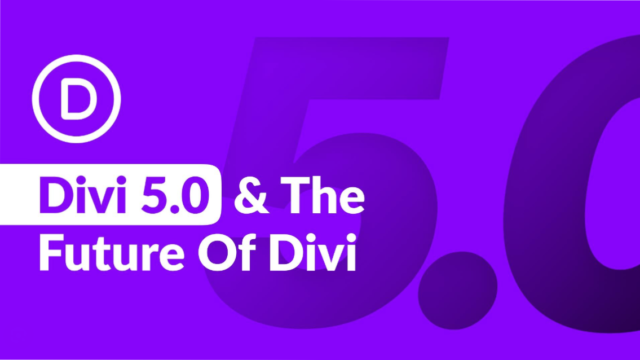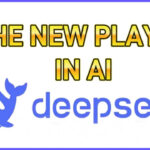Introduction
Ever found yourself staring at a mountain of code, wondering how on Earth you’re going to make your app smarter, faster, and, well, a little more like Iron Man’s Jarvis? Yeah, me too. But the good news is, you don’t have to figure it all out from scratch. With the explosion of artificial intelligence (AI) software, developers now have a treasure trove of tools at their disposal. In this article, we’ll get into the Top AI software for developers, exploring their features, how they can make our lives easier, and real-world examples of where they’re being used. So, grab your favorite beverage, and let’s dive into the wonderful world of AI software!
Why AI Software is a Game-Changer for Developers
Before we jump into the nitty-gritty, let’s chat about why AI software is such a big deal. Picture this: You’re developing a new app, and you want it to predict what users want before they even know they want it. Sounds like magic, right? That’s where AI comes in. AI software enables us to build smarter applications that can analyze data, learn from it, and even make decisions. It’s like giving your app a brain. By using AI tools and frameworks, we can save time and effort, tapping into pre-trained models and algorithms that would take ages to develop on our own. From automating mundane tasks to analyzing complex data sets, AI is the secret sauce that’s driving innovation in every field, from healthcare to finance to entertainment.

The Top 7 AI Software for Developers
Alright, now let’s get into the fun stuff. Here are the top 7 AI software tools that are turning heads in the developer community. Whether you’re a seasoned pro or just dipping your toes into the AI pool, these platforms have something to offer.
1. TensorFlow
TensorFlow, the brainchild of Google, is like the rockstar of AI software. If AI had a hall of fame, TensorFlow would definitely have a star on the sidewalk. This open-source machine learning framework is loved by developers for its versatility and comprehensive toolset. Want to build deep learning models? Check. Need to do some serious data crunching? Check. TensorFlow can handle it all.
Why TensorFlow Rocks
TensorFlow is packed with features that make it a go-to choice for many developers. One of its standout features is its ability to handle large-scale data, which is essential when you’re working with big datasets (think millions of images or years of customer data). It also supports distributed computing, meaning you can train your model faster by spreading the work across multiple machines. Plus, it plays nice with different programming languages, so you’re not stuck if Python isn’t your thing.
Real-World Applications of TensorFlow
Wondering where TensorFlow shines? Well, it’s been used in everything from identifying disease in medical images to powering voice recognition in your smartphone. Companies like Airbnb use it to predict customer preferences, while NASA uses it for space exploration tasks. It’s also a key player in self-driving car technology. Basically, if you can think of a problem, TensorFlow probably has a solution for it.
2. PyTorch
If TensorFlow is the rockstar, then PyTorch is the indie artist with a cult following. Developed by Facebook, this open-source machine learning library is gaining traction, especially among researchers and academics. Its claim to fame? Simplicity and flexibility. PyTorch is like that toolkit that’s easy to pick up but powerful enough to build something impressive.
What Makes PyTorch Awesome
PyTorch is known for its dynamic computational graph, which, in plain English, means you can change things on the fly without having to start from scratch. This makes it ideal for experiments and prototyping. Its integration with Python is seamless, which means if you’re familiar with Python (and who isn’t these days?), you’ll feel right at home. Plus, it has a vibrant community that’s always ready to help out.
When to Use PyTorch
PyTorch is great for projects where you need to iterate quickly. Whether you’re working on image classification, natural language processing, or some deep reinforcement learning, PyTorch has got your back. It’s being used by companies like Tesla for autonomous driving features and by top research labs to push the boundaries of AI. So if you like to tinker and experiment, PyTorch might just be your new best friend.
3. Microsoft Azure Cognitive Services
Next up, we have Microsoft Azure Cognitive Services. Think of Azure as your AI Swiss Army knife. It’s a collection of APIs, SDKs, and services that let you add some serious brainpower to your applications. And the best part? You don’t have to be a machine learning expert to use them.
A Peek into Azure’s Toolkit
Azure Cognitive Services cover a wide range of functionalities. Need to recognize faces in photos? There’s an API for that. Want to translate text into multiple languages? There’s an API for that too. Speech recognition, sentiment analysis, you name it, Azure has a service that can handle it. The pre-built models mean you can integrate these features into your apps without breaking a sweat.
Real-World Examples
Azure’s AI services are being used in all sorts of cool ways. Uber uses Azure to monitor driver and passenger behavior to enhance safety. The BBC uses Azure’s speech-to-text capabilities to make its content more accessible. And let’s not forget how the healthcare industry is using Azure for patient monitoring and diagnostics. The possibilities are endless, and the ease of use makes it accessible for developers of all skill levels.
4. IBM Watson
Remember when IBM’s Watson won Jeopardy? That was a taste of what this AI powerhouse can do. IBM Watson is all about combining advanced natural language processing with machine learning to help you make sense of your data. It’s like having a data scientist who never sleeps.
Why Watson Stands Out
Watson’s strength lies in its ability to understand and analyze vast amounts of unstructured data. Whether it’s text, images, or audio, Watson can make sense of it all. It uses natural language processing to understand context, which makes it perfect for building chatbots or other conversational interfaces. Watson also comes with pre-trained models and can learn from new data, making it adaptable to your specific needs.
Watson in Action
Watson is being used across various industries to transform the way businesses operate. In healthcare, it’s helping doctors diagnose diseases and recommend treatments by analyzing patient data and medical literature. In customer service, Watson-powered chatbots are handling routine queries, freeing up human agents for more complex issues. Even retail is getting in on the action, using Watson to personalize shopping experiences and improve customer satisfaction. With Watson, the sky’s the limit.
5. Google Cloud AI Platform
It’s no surprise that Google, a company practically synonymous with AI, offers a powerful AI platform. Google Cloud AI Platform is a suite of tools and services designed to help developers build, train, and deploy machine learning models. It’s like having access to Google’s AI prowess, all from the comfort of your cloud console.
The Google Cloud Advantage
One of the standout features of Google Cloud AI Platform is its integration with other Google services. You can use Google’s infrastructure to train models quickly and efficiently. Tools like AutoML allow you to build models with little to no machine learning expertise, making it accessible to developers at all levels. Plus, with pre-built APIs for vision, speech, and language, you can easily add powerful AI features to your applications.
How Google Cloud AI Platform is Making Waves
Companies around the world are using Google Cloud AI to power their innovations. For instance, Airbus uses it to analyze satellite images, identifying features like roads and buildings. Spotify taps into Google Cloud AI for personalized music recommendations, enhancing the user experience. And in the world of retail, Google Cloud AI is helping companies predict demand and optimize inventory, ensuring that customers get what they want when they want it.
6. Amazon Web Services (AWS) AI Services
When it comes to cloud computing, Amazon Web Services (AWS) is a name that needs no introduction. AWS AI Services bring the power of machine learning and AI to your fingertips, offering a range of tools that make it easier to add intelligence to your applications.
The AWS AI Ecosystem
AWS offers a wide range of AI services, each designed to solve specific problems. For image and video analysis, there’s Amazon Rekognition. Need to add voice features? Amazon Polly converts text to lifelike speech. Building a chatbot? Amazon Lex has you covered. And for those serious about machine learning, Amazon SageMaker provides a full suite of tools for building, training, and deploying models. It’s a one-stop shop for all things AI.
AWS AI in the Real World
AWS AI services are widely used across various industries. Netflix, for example, uses Amazon Rekognition to analyze video content and enhance their recommendation engine. In the automotive industry, Toyota uses AWS for their connected car platform, analyzing data from vehicles to improve safety and performance. Even the NFL uses AWS AI to provide deeper insights into game statistics and player performance. With AWS AI, the possibilities are as vast as the Amazon rainforest.
7. OpenAI
Last but definitely not least, we have OpenAI, the research organization that’s been making waves with its language models. OpenAI’s mission is to ensure that artificial intelligence benefits all of humanity, and they’ve been making some impressive strides toward that goal.
What OpenAI Brings to the Table
OpenAI is best known for its Generative Pre-trained Transformer (GPT) models, like the one you’re reading right now! These models are designed to understand and generate human-like text, making them incredibly versatile. Whether you need a chatbot, content generator, or language translation tool, OpenAI’s models can handle it. They also offer APIs that make it easy to integrate these capabilities into your own apps.
Ethical Considerations with OpenAI
With great power comes great responsibility, and that’s especially true with OpenAI’s capabilities. The potential for misuse—like generating fake news or harmful content—is a serious concern. As developers, it’s crucial to think about the ethical implications of our work. OpenAI has implemented guidelines and safety measures, but it’s up to us to ensure we use these powerful tools responsibly. Let’s keep AI on the good side, shall we?
Conclusion: Choosing the Right AI Software for Your Needs
So there you have it, folks—seven of the best AI software tools that developers can use to take their projects to the next level. Whether you’re building a simple app or working on the next big thing in AI, these tools offer the features and flexibility you need to succeed. But remember, the key to choosing the right AI software lies in understanding your project requirements and matching them with the strengths of each tool.
Key Takeaways
- TensorFlow and PyTorch are excellent choices for building and training complex machine learning models, with TensorFlow being more suited for production and PyTorch for research.
- Microsoft Azure Cognitive Services and AWS AI Services offer a wide range of pre-built AI tools that make it easy to add intelligence to your applications, even if you’re not an AI expert.
- IBM Watson is a powerful option for natural language processing and data analysis, with strong applications in customer service and healthcare.
- Google Cloud AI Platform is a solid choice for leveraging Google’s infrastructure and expertise, offering tools that cater to both beginners and advanced developers.
- OpenAI provides cutting-edge language models that can generate human-like text, but using these tools responsibly is crucial to avoid ethical pitfalls.
FAQs
Q1: Which AI software is best for beginners?
A: For beginners, Microsoft Azure Cognitive Services and Google Cloud AI Platform are excellent choices because they offer pre-built models and user-friendly interfaces.
Q2: Can I use more than one AI software in my project?
A: Absolutely! Many developers use a combination of AI tools to take advantage of the unique features each one offers. For example, you might use TensorFlow for training models and Azure for integrating pre-built AI services.
Q3: Are these AI software tools expensive?
A: The cost can vary depending on usage, but many of these tools offer free tiers or pay-as-you-go pricing models, making them accessible to both hobbyists and large enterprises. Always check the pricing details on their official websites to make an informed decision.
Looking Ahead: The Future of AI Software for Developers
The AI landscape is evolving faster than you can say “machine learning.” With continuous advancements, we can expect AI software to become even more powerful, intuitive, and integrated with emerging technologies like blockchain, IoT, and augmented reality. Developers who stay ahead of these trends will not only build better apps but also play a key role in shaping the future of technology. So keep experimenting, keep innovating, and most importantly, keep having fun with AI!










